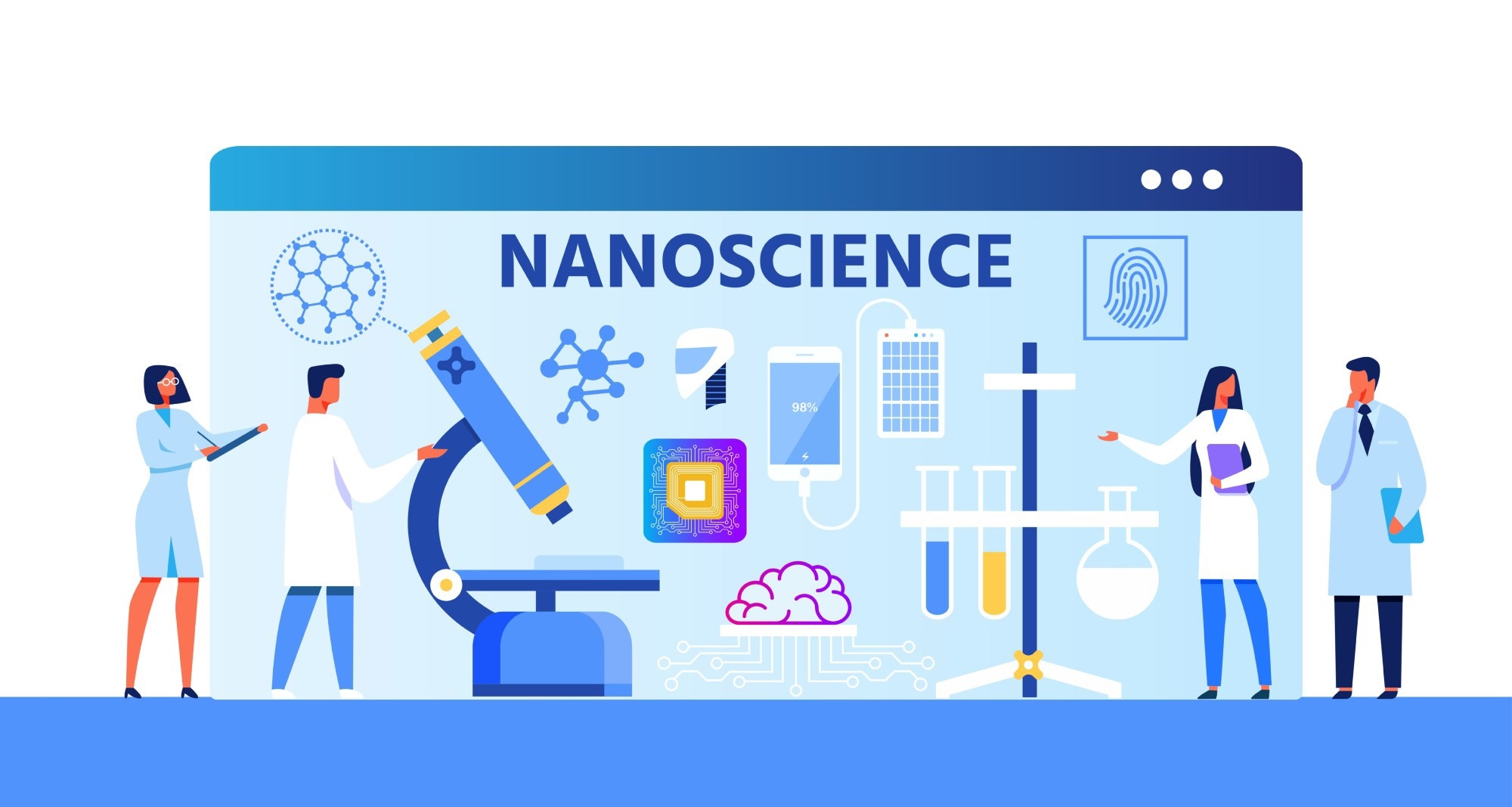Nanotechnology is expanding the ease of medical equipment access, information, and theranostics. Nanomedicine is the use of nanotechnology in medicine to provide efficient solutions for disease diagnosis, therapy, and prevention. In this article, AZoNano focuses on how nanomedicine is impacting society.
Nanotechnology in Society
Societies worldwide that lack access to fundamental services like clean water, healthcare, and stable energy benefit from novel solutions offered by nanotechnology. Nanoscience helps to address the urgent need for accessibility to essential services by creating products such as enhanced water purification and filtration systems.
Water filters as small as 15-20 nanometers in width may eliminate nano-sized particles such as viruses and bacteria. The cost-effectiveness and portability of these water treatment devices makes them suitable for boosting the quality of drinkable water in developing nations.
For instance, nano-filters made of graphene can be delivered to remote locations at which only contaminated water is obtainable and filtration is most needed.
Nanomedicine, including tools and equipment for medical diagnosis and treatment, food production, and information technologies, are a few other applications where nanotechnology is used to improve the standard of living offered to society’s citizens.
What Are the Benefits and Barriers of Nanomedicine?
The societal impact of nanomedicine refers to both the benefits and barriers (issues) that introducing revolutionary nano-based products including medical sensors, drug delivery systems, and nanomaterials might pose to humanity and society.
Nanomedicine can increase the effectiveness (bioavailability) and safety of traditional therapeutics. It is extremely beneficial as a non-invasive instrument for diagnostic imaging, tumor identification, and drug delivery due to the distinct magnetic, optical, and structural features of nanomaterials that other instruments lack.
Nanovaccines are nanorods or nanoparticles distributed in a fluid with antigens for a specific illness. Antigens cause an immunological reaction when a nanovaccine is administered to the body, which can strengthen immunity. They have the potential to become a crucial method for distributing vaccinations to remote areas since nanomedicine can be utilized as a preventive measure for several diseases.
Still, significant benefits have their share of risks and barriers. The lack of batch-to-batch repeatability, long-term stability of inventions, the complexity of the production procedures, long-term toxicity assessments, societal acceptance, and maintaining sterile settings are among the barriers associated with the translation of nanomedicines.
The legislative guidance needed for nanomedicine innovations to proceed with clinical trials lags behind the ongoing scientific developments in this respect.
The global translation of nanomedicine has also been hindered by the lack of proper controls, poorly defined key quality criteria, and therapeutically appropriate animal models that accurately represent human biological mechanisms.
Safety and environmental concerns, coupled with transitional consequences like the displacement of conventional businesses as nanotechnology-based products take hold and become the mainstream, are other barriers that privacy rights activists have found concerning. These could be particularly relevant if the potential nanotoxicity impacts of nanoparticles are disregarded.
The progressive adoption of uniformly standardized procedures might encourage improved and factual reporting of materials and processes and impact the paradigm for many already available nanomedicine products.
Boosting Trust in Nanomedicine
The inventive aspect of nanomedicine may captivate society’s interest; however, there are several concerns regarding the societal and environmental impacts of its progress. Studies have proven that using nanomedicine has many benefits but transforming society will depend on public perception.
Therefore, several organizations and social scientists in society recommend that public engagement should be included in the technical evaluation for the commercialization of nano-based products in addition to governance.
Scientists are working to address major medical issues like the COVID-19 pandemic, which demand rapid attention from the perspective of society to provide trustworthy nanomedicines for the public.
John Hopkins University researchers have created a sensor that can quickly and accurately identify COVID-19 and other viruses by employing large-area nanoimprint lithography, machine learning and surface-enhanced Raman spectroscopy (SERS).
Cytimmune, a biotechnology company, has developed Aurmine (CYT-6091), a new nanomedicine-based therapy for treating solid tumor malignancies. It is composed of gold nanoparticles, polyethylene glycol (PEG-THIOL) molecules, and tumor necrosis factor-alpha (TNF-α), a tumor-killing agent attached to it.
TNF molecules attach the gold nanoparticle to cancerous cells once it enters the vicinity of a cancer tumor. The therapeutic product is now being prepared for phase 2 clinical trials to be conducted at National Cancer Institute (NCI).
Organizations such as the Food and Drug Administration (FDA), the United States Environmental Protection Agency, and the Health & Consumer Protection Directorate of the European Commission have already begun addressing the potential negative impacts posed by nanoparticles to manage risks associated with nanomedicines. As a result, the public’s trust in nanomedicine advancements can be encouraged.
The National Nanotechnology Initiative is working to advance the commercialization of nanotechnology research and development, promote public awareness, and ensure the ethical advancement of nanomedicine for the benefit of society.
The National Institute for Occupational Safety and Health (NIOSH) has also conducted preliminary studies on how individuals may be exposed to nanoparticles during the fabrication or industrial usage of nanomaterials and how nanoparticles interact with the body’s internal systems.
NIOSH currently provides provisional guidelines for handling nanomaterials that are in accordance with the state of scientific understanding. Based on the information, various researchers, regulatory agencies, and healthcare organizations are uniting to boost the public’s trust in nanomedicine and have a beneficial social impact.

Image Credit: Unitone Vector/Shutterstock.com
Future Outlook: The Impact of Nanomedicine on Society
Numerous products and innovations in the field of nanomedicine are now on the market. However, others still need to overcome barriers, including technological constraints, cost-effectiveness issues, and possible hazards that might have an adverse impact on society.
To address these issues, proponents of nanomedicine can make significant contributions to studies targeted at creating effective belief systems and control frameworks that encourage ethical research practices and prevent misconduct.
Contributions may involve establishing what constitutes improper practices, assigning researchers, institutions, and funding organizations clearly defined responsibilities concerning the negative impacts of nanomedicines, and designing a fair, precise, knowledge-based system for sanctions and accusation investigations.
This would promote the development of effective policies for the impartial evaluation of innovations in nanomedicine both nationally and internationally and lead to an advanced societal future.
Continue reading: The Benefits of Nanomedicine
Image Credit: Envato Elements
News
Scientists Unlock a New Way to Hear the Brain’s Hidden Language
Scientists can finally hear the brain’s quietest messages—unlocking the hidden code behind how neurons think, decide, and remember. Scientists have created a new protein that can capture the incoming chemical signals received by brain [...]
Does being infected or vaccinated first influence COVID-19 immunity?
A new study analyzing the immune response to COVID-19 in a Catalan cohort of health workers sheds light on an important question: does it matter whether a person was first infected or first vaccinated? [...]
We May Never Know if AI Is Conscious, Says Cambridge Philosopher
As claims about conscious AI grow louder, a Cambridge philosopher argues that we lack the evidence to know whether machines can truly be conscious, let alone morally significant. A philosopher at the University of [...]
AI Helped Scientists Stop a Virus With One Tiny Change
Using AI, researchers identified one tiny molecular interaction that viruses need to infect cells. Disrupting it stopped the virus before infection could begin. Washington State University scientists have uncovered a method to interfere with a key [...]
Deadly Hospital Fungus May Finally Have a Weakness
A deadly, drug-resistant hospital fungus may finally have a weakness—and scientists think they’ve found it. Researchers have identified a genetic process that could open the door to new treatments for a dangerous fungal infection [...]
Fever-Proof Bird Flu Variant Could Fuel the Next Pandemic
Bird flu viruses present a significant risk to humans because they can continue replicating at temperatures higher than a typical fever. Fever is one of the body’s main tools for slowing or stopping viral [...]
What could the future of nanoscience look like?
Society has a lot to thank for nanoscience. From improved health monitoring to reducing the size of electronics, scientists’ ability to delve deeper and better understand chemistry at the nanoscale has opened up numerous [...]
Scientists Melt Cancer’s Hidden “Power Hubs” and Stop Tumor Growth
Researchers discovered that in a rare kidney cancer, RNA builds droplet-like hubs that act as growth control centers inside tumor cells. By engineering a molecular switch to dissolve these hubs, they were able to halt cancer [...]
Platelet-inspired nanoparticles could improve treatment of inflammatory diseases
Scientists have developed platelet-inspired nanoparticles that deliver anti-inflammatory drugs directly to brain-computer interface implants, doubling their effectiveness. Scientists have found a way to improve the performance of brain-computer interface (BCI) electrodes by delivering anti-inflammatory drugs directly [...]
After 150 years, a new chapter in cancer therapy is finally beginning
For decades, researchers have been looking for ways to destroy cancer cells in a targeted manner without further weakening the body. But for many patients whose immune system is severely impaired by chemotherapy or radiation, [...]
Older chemical libraries show promise for fighting resistant strains of COVID-19 virus
SARS‑CoV‑2, the virus that causes COVID-19, continues to mutate, with some newer strains becoming less responsive to current antiviral treatments like Paxlovid. Now, University of California San Diego scientists and an international team of [...]
Lower doses of immunotherapy for skin cancer give better results, study suggests
According to a new study, lower doses of approved immunotherapy for malignant melanoma can give better results against tumors, while reducing side effects. This is reported by researchers at Karolinska Institutet in the Journal of the National [...]
Researchers highlight five pathways through which microplastics can harm the brain
Microplastics could be fueling neurodegenerative diseases like Alzheimer's and Parkinson's, with a new study highlighting five ways microplastics can trigger inflammation and damage in the brain. More than 57 million people live with dementia, [...]
Tiny Metal Nanodots Obliterate Cancer Cells While Largely Sparing Healthy Tissue
Scientists have developed tiny metal-oxide particles that push cancer cells past their stress limits while sparing healthy tissue. An international team led by RMIT University has developed tiny particles called nanodots, crafted from a metallic compound, [...]
Gold Nanoclusters Could Supercharge Quantum Computers
Researchers found that gold “super atoms” can behave like the atoms in top-tier quantum systems—only far easier to scale. These tiny clusters can be customized at the molecular level, offering a powerful, tunable foundation [...]
A single shot of HPV vaccine may be enough to fight cervical cancer, study finds
WASHINGTON -- A single HPV vaccination appears just as effective as two doses at preventing the viral infection that causes cervical cancer, researchers reported Wednesday. HPV, or human papillomavirus, is very common and spread [...]






















